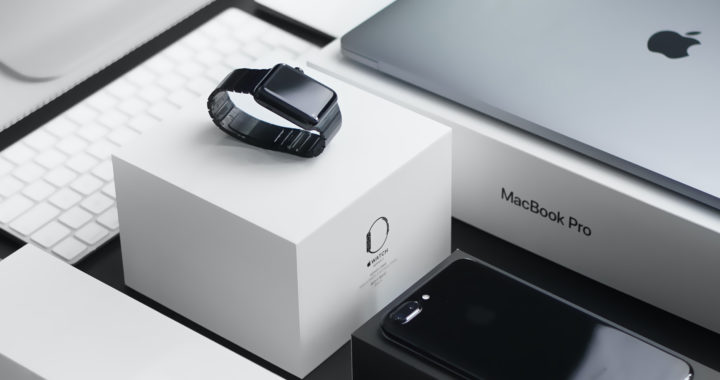Apple introduced the Apple Computer I in 1976 and followed suit with the introduction of the Macintosh in 1984. Three decades later, especially beginning in 2000 and further onwards, the company has evolved from a computer manufacturer to a full-blown multinational technology company offering an array of products ranging from computers and mobile devices to software applications and online-enabled services.
The diversified product portfolio of the company has created the so-called Apple Ecosystem. Diversification is an integral aspect of its product strategy and an important factor of its marketing mix and promotion strategy. However, more than just offering different products for different product categories and market segments, its primary intention rests on creating a competitive advantage centered on promoting a halo effect and creating several products that complement one another.
Advantages of the Apple Ecosystem: Benefits and Applications
What exactly is the Apple ecosystem? For starters, it is not a product nor a brand name and a trademark. It is a term used by industry analysts and observers to describe how different Apple products can be used together and work collectively to create a unique consumer experience stemming from the seamless integration of different Apple-made devices and systems, software or applications, and relevant services. These products complement one another.
Below are its specific benefits and applications:
1. Creates a Uniform and Coherent User Experience
One of the benefits of the Apple ecosystem or buying multiple Apple products is that it makes the entire user experience simpler and more convenient. For example, an individual familiar with the iPhone would not have a hard time familiarizing himself or herself with the user interface of an iPad.
Both the iOS and the iPadOS are fundamentally the same. The same is somewhat true for the macOS of MacBook laptops or iMac desktops, as well as the watchOS of the Apple Watch. These operating systems feature the same overall design philosophy that creates a higher level of familiarity among their users.
Apple products are easier to connect with one another compared with connecting several products from different brands or manufacturers. The iCloud storage is accessible to both an iPhone and a MacBook. A user needs a single Apple ID to manage all of his or her devices, as well as all other digital accounts associated with his or her digital ID.
2. Improves the Functionalities of a Particular Product
Another advantage of the ecosystem is that it can improve the features and benefits of a specific Apple product. An example is the iPad. This device can be troubleshot readily with a Mac computer compared to computers running on the Windows operating system.
The Apple Watch can be used to unlock a Mac computer, iPhone, or iPad. Furthermore, users can send and receive messages and calls coursed through their iPhones through their smartwatches. The AirDrop and SharePlay file sharing and connectivity features are also unique to the entire Apple experience.
An iPhone can be a productivity powerhouse due to the suite of productivity applications offered by Apple for free. These include Pages, Keynote, and Numbers, as well as FaceTime and Mail. A task-in-progress done in a particular Apple app can be continued and completed using another Apple device such as an iPad or a MacBook.
Disadvantages of the Apple Ecosystem: Limitations and Criticisms
Note that a “product ecosystem” is not unique to Apple. Other companies have built their respective ecosystems. For example, Samsung has attempted to consolidate its entire mobile and computing experience through its range of Galaxy products. In addition, it has a slew of apps and tools that enable users to manage and control almost all of their Samsung-branded devices.
Google and Microsoft also have their respective ecosystems. The underlying philosophy is similar to the approach of Apple. However, it cannot be denied that the Apple ecosystem remains incomparable because the company has a wider stack covered. It is still important to note that the entire user experience has notable disadvantages and issues.
Below are the major limitations and criticisms:
1. Apple Products are Meant to Work With One Another
One of the notable disadvantages of the Apple ecosystem is the “Walled Garden” criticism. Most Apple products are designed primarily to work with other Apple devices and services. The AirTag works best when used with an iPhone or a Mac computer.
Furthermore, the same is also true for the AirPods and HomePods. These devices do not function as well or with as many functionalities as other devices from other manufacturers such as Android smartphones. It is impractical to buy these products as standalone devices. They are intended to work with other Apple products.
It also will not make sense for a consumer to subscribe to Apple Music and Apple Arcade streaming services if he or she does not own an Apple device such as an iPhone or a Mac computer. Although these apps have versions that run on other platforms such as Android and Windows, they still require users to create an Apple ID.
2. Creating and Using the Entire Ecosystem is Expensive
Another drawback of the ecosystem is that it is inherently expensive to create. Remember that Apple is notorious for its premium price tags. The premium pricing strategy of the company means that a consumer has to spend thousands of bucks to get the full Apple experience.
Using an iPhone and complementing it with other Apple devices such as the Apple Watch, the iPad Air, and the 13-inch MacBook Pro would cost a consumer around USD 5000.00 or more. The entire ecosystem is not for someone who is not willing to forego the premium price tags associated with owning multiple Apple products.
It is also important to note that is difficult for a tenured consumer to leave the ecosystem or the so-called Apple walled garden because there are no other alternative products or brands that can match the coherence of the entire Apple experience. Critics noted that the ecosystem is designed to keep the users from leaving.






